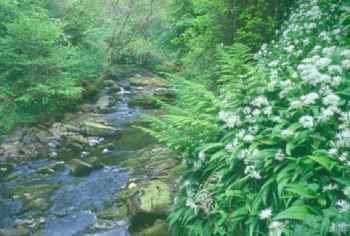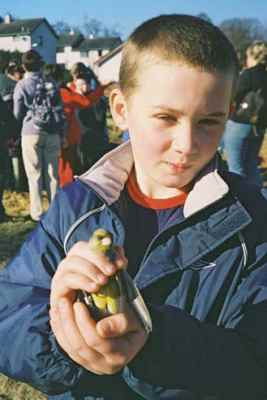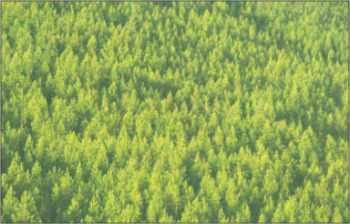 | Caithness.Org | Community | Business | Entertainment | Caithness... | Tourist Info | Site Map |
• Advertising • Chat Room • Contact Us • Kids Links • Links • Messageboard • News - Local & Scottish • News - UK & News Links • About / Contact Us • Submissions |
• Bookshop • Business Index & News • Jobs • Property For Sale • Property For Rent • Shop • Sutherland Business Index |
• Fishing • Fun Stuff • George, The Saga • Horses • Local Galas • Music • Pub Guide • Sport Index • What's On In Caithness |
• General Information • B & Bs • Backpackers • Caravan & Camping • Ferries • Getting Here • Holiday Letting • Hotels • Orkney • Pentland Firth • Sutherland • Taxis |
| N E W S F E E D S >>> |
The Sutherland
Biodiversity Action Plan - October 2003
FOREST AND WOODLAND
|
1.4 FOREST & WOODLAND Introduction In total, Sutherland holds over 74,200 hectares of Woodland. Most of Sutherland’s forests and woodlands are conifer plantations of comparatively recent origin. However, small areas of native, mainly deciduous woodland do exist, especially on the west coast and in the sheltered straths, dominated by birch, hazel, oak or alder, with a variety of other species. Their importance to the biodiversity of the area greatly outweighs their coverage. The ancient woodland inventory identifies approximately 11,700 hectares of woodland in the county, much of which is unmanaged and in poor condition. The northernmost stands of oak and native pinewood are found in the county.
Specific habitats discussed in Appendix 1 Key Issues A. Management of semi-natural woodlands Issues: Over-grazing by deer, rabbits and domestic stock, bracken expansion and inappropriate felling and burning have left many semi natural woodlands isolated and in poor condition. Natural regeneration is often absent or of only one species, leading to an unnatural age-structure and composition. In the uplands, some restoration and expansion has occurred through fencing or planting programmes in the last 10 - 15 years, however forest fencing raises further issues in some areas. Opportunities: The Scottish Forestry Grants Scheme (SFGS) provides incentives for the expansion, restoration and management of semi-natural woodlands. A reduction in grazing pressure by more effective deer control and shepherding will benefit many woodlands outwith specific schemes. For species of particular concern, encouragement of enrichment planting of appropriate species from local seed sources is necessary to preserve the diversity of semi-natural woodlands. Current projects: The Gearrchoille Woodland,
near Ardgay was recently gifted to the local community, and a company has
been formed to manage access, interpretation and woodland operations.
Under the
|
B. Management of coniferous plantations Issues: The majority of Sutherland’s plantations have been managed on a clearfell system, which provides little benefit to either biodiversity or local communities. Low timber prices and distance from markets have provided a disincentive to silviculture, even on those sites where ground conditions and exposure would permit alternatives to clearfell. Opportunities: Restructuring for the second
rotation should allow better forest design, incorporating a greater
variety of species and open ground habitats. Current projects: People throughout Sutherland are becoming increasingly involved in the management of their local woodlands through initiatives run by community groups like North Sutherland Community Forest Trust, Culag Community Woodland Trust and Rosehall & District Action Group. North Highland Forest Trust provide advice and assistance for community groups wishing to manage their local woodlands, and have developed a series of marketing projects using timber from local forests including woodchip corrals and heating plants.
C. Management of riparian woodlands Issues: The banks of many rivers, burns and lochs - the riparian zone - are devoid of woodland. Riparian woodlands can provide some of the most valuable habitat linkages for wildlife, help stabilise river and stream banks, and give cover and a food source to fish. Opportunities: Restoration and expansion of riparian woodlands should be encouraged as a priority in Sutherland. The Forestry Commission’s Scottish Forestry Grant Scheme provides enhanced opportunities for the planting, natural regeneration and management of riparian woodlands. Current project: Through the previously mentioned LIFE Rivers Project, the Forestry Commission hope to restructure coniferous plantations in the River Oykel catchment to open up the riparian areas and allow more light to penetrate, and to include more broadleaf species to encourage invertebrates and help stabilise river banks.
D. Management of policy and urban fringe woodlands Issues: Under-management, fly-tipping and the spread of invasive species such as sycamore and rhododendron present a threat to some woodlands in Sutherland. Opportunities: Invasive species such as rhododendron should be controlled where possible, and increased local involvement encouraged to promote responsible stewardship.
E. Other issues Forest Fencing: Bird strike on forest fences is a cause of mortality for some species – it can be significantly reduced by marking necessary fencing and removing redundant fences. Balance between woodland and other land uses: Current project: The Highland Indicative Forest Strategy is currently under review, and the new Strategy that helps guide new woodland plantations and natural regeneration schemes, as well as identifying opportunities for restructuring existing woodlands, is likely to be issued in 2004. |












